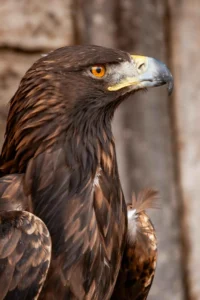Falcons are highly adaptable and can thrive in diverse habitats, including forests, deserts, grasslands, and urban areas. They are found on every continent except Antarctica. Urban environments, with their tall buildings, provide excellent nesting sites for species like the peregrine falcon, mimicking the cliffs they naturally inhabit. In many ways, the presence of falcons in such varied landscapes is a testament to the concept of Falcon Rising—their adaptability and survival instincts in the face of changing environments.
Hunting Techniques of Falcon rising
Falcons are apex predators, employing sharp vision to spot prey rom great distances. Their diet mainly consists of small birds, rodents, and insects. Falcons use a combination of speed, strategy, and precision to capture prey. For example, the peregrine falcon dives at breathtaking speeds to strike and incapacitate its target with a single blow. This astonishing display of hunting mastery showcases the essence of Falcon Rising, where skill and instinct converge to dominate the skies.
Falcons in Culture and History
Throughout history, falcons have symbolized power, nobility, and freedom. Falconry, the ancient practice of training falcons for hunting, dates back thousands of years and remains a cherished tradition in many cultures, particularly in the Middle East. Falcons have also appeared in art, literature, and heraldry, symbolizing vision and ambition. The concept of Falcon Rising resonates in these cultural contexts, representing elevation, both literally and metaphorically.
Conservation Status
While some falcon species, like the peregrine falcon, have made a remarkable recovery from near-extinction due to pesticide use (such as DDT), others face threats from habitat loss, hunting, and climate change. Conservation efforts, including breeding programs and habitat protection, continue to ensure the survival of these magnificent birds. The ongoing fight to protect falcons is a living embodiment of Falcon Rising, as humanity works to restore and elevate their place in the natural world.
The Connection Between the Rising Falcon and the Blue Macaw
The Blue Macaw, known for its striking plumage and graceful flight, shares a unique connection with the concept of the Rising Falcon through symbolism of freedom, beauty, and resilience. While falcons are celebrated for their speed and hunting skills, the Blue Macaw represents rarity and environmental conservation, with its vibrant colors and social nature. Both species face significant threats to their populations—falcons from habitat destruction and pesticide use, and the Blue Macaw due to deforestation and the illegal pet trade. This makes the conservation of both birds critical. Despite their differences, with falcons soaring through skies at remarkable speeds and the blue macaws gliding through tropical forests, both embody the power of adaptation and the ongoing efforts to protect these magnificent creatures from extinction. Their beauty and survival are testaments to the importance of preserving wildlife for future generations.
Conclusion
Falcon Rising is not just a phrase; it encapsulates the essence of these extraordinary birds. The falcon is a symbol of speed, agility, and resilience. Its extraordinary hunting abilities, adaptability, and historical significance make it a fascinating subject for bird enthusiasts and conservationists alike. As we strive to protect their habitats, we ensure that future generations can marvel at these incredible creatures soaring through the skies, embodying the spirit of Falcon Rising.’
Thank you for Reading!
: Usman Malik

